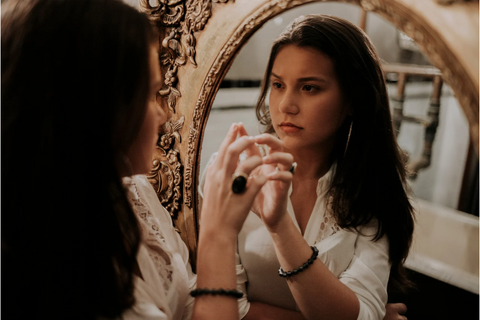How to Do a Tarot Reading for Yourself
This post may contain affiliate links. If you buy something through our retail links, we may earn a small affiliate commission at no extra cost to you.

Tarot cards have been around for centuries. Throughout history, many people have used them to gain insight into their future or that of someone else’s. Tarot reading is a very individualized process. However, there are some similarities between each card reading, as well as some important things you must know before getting started.
The Tarot deck is a set of 78 cards, each with their own unique meaning and story to tell. You can learn tarot, even if you're not an expert! A booklet with the signification of each card is often included with the tarot deck so you don't have to be an expert to start learning tarot. Asides from knowing the basics of tarot cards, it is important to trust yourself. Intuition is everything when it comes to reading tarot cards. With the perfect combination of both knowledge and intuition, you have a successful reading at the palm of your hands.
Tarot is an exciting and unique way to connect with the greater world around you. It’s a tool that can be used in many ways, from gaining perspective on past events as well as understanding future possibilities. Tarot has a long history of being accessible to those who seek it out — or make the decision that they are ready for it.
1. Find a quiet place to do your reading
Tarot cards are insightful and can be used to answer many questions. It's important to set the right mood for your reading to be as intuitive and clear as possible. You can start by lighting a candle, burning some incense or choosing your favourite crystals for the reading. Take a few deep breaths to help you focus on your reading. And finally, set an intention for what you want from your reading.
2. Gather your cards and take some time to shuffle them
Before you begin pulling out cards, your energy is just as essential as any other aspect in reading tarot cards. It's recommended to give the cards a good shuffle as you're thinking about your question. Your question should be clear and open-ended. You can also say your name and birth date. This is to get personal with your cards. As you shuffle, channel your energy into the reading and focus on your question.
In addition, it's also recommended to place them under your pillow at night to get more intimate. This may sound unusual or weird at first, but you're doing this to infuse your energy with the tarot cards. The more your energy is found within the cards, the more successful your reading will be.

3. Pull a Card
It is time to pull a card. If this is your first time doing tarot card reading, it's best to do a one-card pull as to avoid complicating things. When you feel sparks with a certain card or if a card is trying to draw your attention, pick that card up. Lay the cards in front of you and let your intuition take over.
4. Study the cards
Tarot cards have 2 sections in them, which are the major arcana and the minor arcana. They are 22 major arcana cards, and they represent big themes and symbols. For instance, if you pick up the sun card, this represents radiance and abundance. The major arcana represents the bigger themes in your life as a whole.
The minor arcana cards, on the other hand, represent minor themes in life. Minor arcana cards are similar to a regular deck of playing cards. As you lay the minor arcana cards, study what each card represents- cups, swords, pentacles, and wands. Cups refer to emotions, feels, and relationships. Swords represent mentality, communication, and thoughts. Pentacles represent health and money. Lastly, wands represent creativity and passion.
Major arcana cards show your life lessons, while minor arcana cards show the key situations with your current circumstance. If the cards you pull up show mostly minor arcana cards, you're dealing with everyday issues that may not last.

5. Tell the story behind the card
Each card has a specific story behind them, which is why it's essential to study the symbols and representations beforehand. Once you pick a card that you felt right in your gut, start telling its story. You shouldn't feel pressured to rush telling the story of the card, but take your time. What do you see on the card? What are the symbols displayed on the card? Who's in the card and what precisely are they doing? How could the characters be feeling? These are all necessary questions to ask yourself when narrating the story of the card you're holding.
6. Pay attention to intuition
We've mentioned earlier that asides from studying the cards, it's essential to trust your intuition and gut instinct. Your intuition is how you pick up on the messages you get from the card. Based on the images and symbols you see on the card, your intuition tells you what the story is. More often than not, your initial thought or feeling is the right one. You know what that your gut feeling is often right about something- and the same goes for reading tarot cards. If you're just starting, it takes a while before listening to your instinct when reading and analyzing tarot cards. When this happens, just take a deep breath and describe what the card shows you. Intuition doesn't happen overnight, but as you progress into tarot card reading, you'll gradually let your instinct guide you. In result, you'll eventually find the deeper meaning behind each card.
7. Trust yourself
The point of reading tarot cards is to trust yourself enough to get all the answers you seek within yourself. Of course, you won't get the hang of it on your first try. Just like with anything else, practice is key. Trusting yourself is one of the most important keys in a successful tarot card reading. If you don't trust yourself, you won't be able to decipher the meaning, symbols, and story behind each card. The more you practice on reading tarot cards, the better you'll get.
As intimidating and confusing tarot reading can seem at first, you'll get the hang of it eventually. The best thing about reading tarot cards is the answers you get from them, whether it's solely for yourself or for other people.



